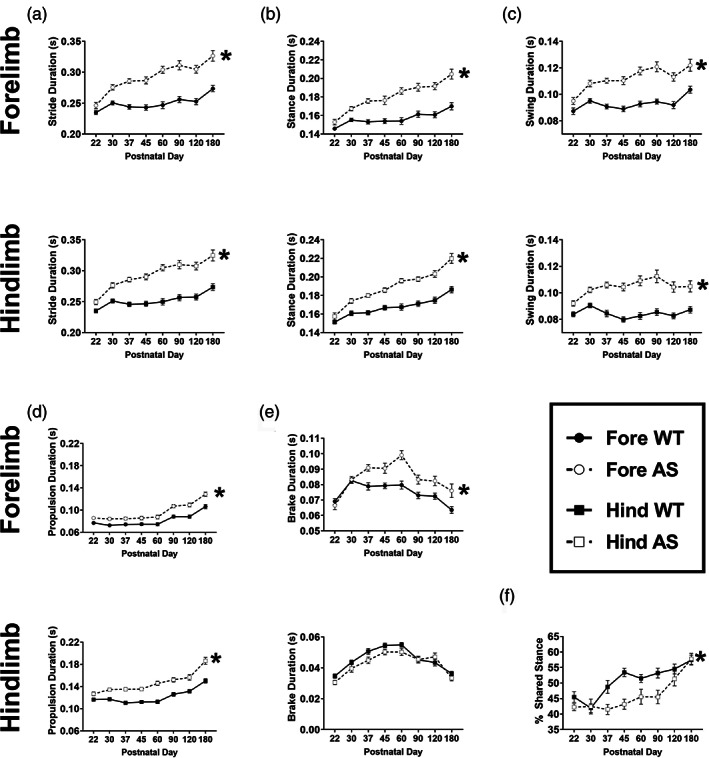FIGURE 5.

AS mice exhibited aberrant temporal metrics of gait beginning at PND30 with progressive worsening over time. Temporal subcomponents of gait were detectably different in AS mice as early as weaning, but typically at PND30, and continued to progress while WT mice showed maturation and stabilization of gait parameters. (a) Stride duration was significantly higher in the fore and hindlimbs of AS mice, compared to WT. (b) Aberrant stance time was observed in AS mice, in both limbs. (c) Similar to stance time, swing time was also elevated in AS mice. Interestingly, elevated hindlimb swing time was detected earlier at PND22. (d) Propulsion time was increased in the AS group PND30 onwards, which suggests more time is required to produce force necessary to initiate the next step. (e) Time spent in the braking phase was only significantly higher in the forelimbs of AS mice, likely due to the specific use of forelimbs in steering. This difference emerged at PND37. (f) Double support, or % shared stance time, in the hindlimbs, was significantly different between AS and WT mice over the lifespan. *p <0.05, main effect of group of two‐way repeated measured mixed‐effects model
